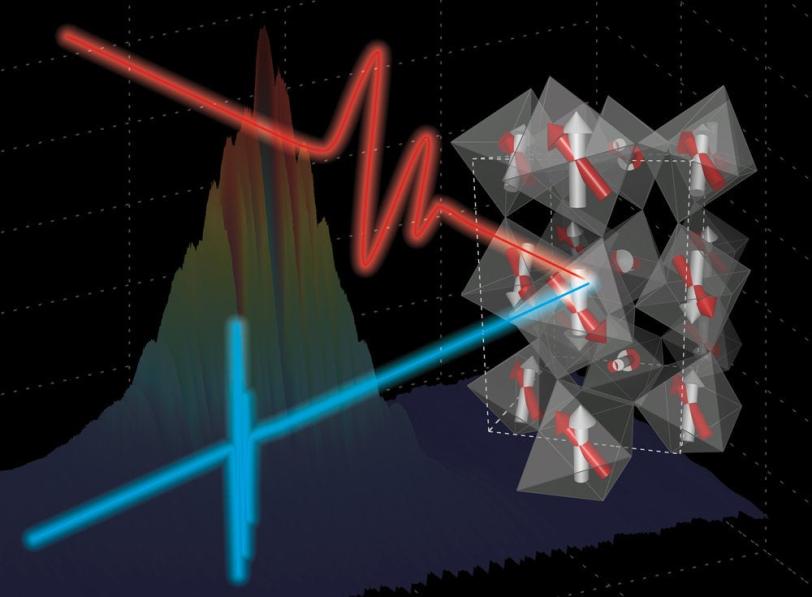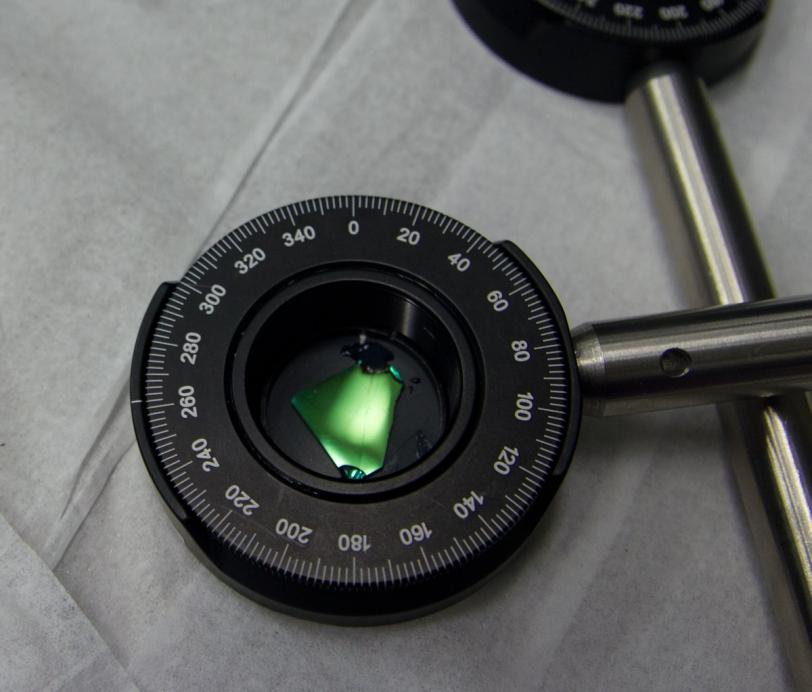X-ray Laser Sheds New Light on Quest for Faster Data Storage
An experiment at SLAC’s X-ray laser has revealed the first atomic-scale details of a new technique that could point the way to faster data storage in smartphones, laptops and other devices.
By Glenn Roberts Jr.
An experiment at SLAC’s X-ray laser has revealed the first atomic-scale details of a new technique that could point the way to faster data storage in smartphones, laptops and other devices.
Researchers used pulses of specially tuned light to change the magnetic properties of a material with potential for data storage. Then they used SLAC’s Linac Coherent Light Source (LCLS) X-ray laser to directly measure those magnetic changes – and discovered that they took place in less than 1 trillionth of a second, about a billion times faster than previously observed in similar materials.
“This is much shorter than the previously established limit of several thousandths of a second in this type of material, and suggests a possible new approach for memory devices,” said Teresa Kubacka, a doctoral researcher at the Swiss Federal Institute of Technology in Zurich and lead author of the study.
What’s more, she said, the new method may be more efficient than current techniques for magnetic data storage.
The team, which included scientists from the Paul Scherrer Institute, SLAC, the Stanford Institute for Materials and Energy Sciences (SIMES) and other research centers, described its findings in the March 6 issue of Science.
Commercially available magnetic data storage devices use magnetic heads to switch domains on a moving medium in billionths of a second. These domains, read as ones and zeroes, are the building blocks of computer data.
The material in this study, called terbium manganite, was selected because it is “multiferroic” – it has both magnetic and electrical properties, which are coupled in a way that allows a unique form of magnetic switching driven by an electric field. This makes it a good model for developing similar materials with more commercial promise.
In the experiment, researchers tuned an optical laser to produce light at a specific frequency that electrically excited the material and triggered magnetic changes while minimizing any heating effects. These excitations, known as “electromagnons,” may offer a way to drastically speed up a material’s magnetic response to electric pulses.
Then the researchers used the LCLS X-ray laser to make the first direct observation of the magnetic response to the electric pulses. They discovered that the spins of the electrons in the material – which are like tiny, atomic-scale magnets – began to move toward a switched magnetic state in just a trillionth of a second, although they stopped short of completing the switch.
While previous studies have used laser pulses to switch the magnetic states of purely magnetic materials, those methods were less direct and less efficient. And in multiferroics, other approaches that are based on simply turning the electric field on and off lead to changes about a million times slower than in today’s commercial devices.
Many advances are needed to make the new approach viable, Kubacka noted. In the LCLS experiment, for example, the material was cooled with liquid helium in order to align its magnetic and electrical properties and a large laser system was required to produce the electric field pulse.
To build a commercially viable device, it may be possible to amplify light from a smaller laser or identify another mechanism for producing an electric field pulse strong enough to manipulate magnetism and achieve full switching of magnetic domains, she said. Other materials that exhibit the desired magnetic and electric coupling are also being sought.
“The big challenge in the field is to find a similar room-temperature material with a relatively simple structure so that it could be suitable for commercial applications,” Kubacka said.
Researchers from Lawrence Berkeley National Laboratory and Johns Hopkins University also participated in the experiment.This research was carried out on the Soft X-ray Materials Science experimental station, which is funded by a consortium including LCLS, Stanford, Berkeley Lab, the University of Hamburg and the Center for Free Electron Laser Science. The research was also supported by the Swiss National Science Foundation and the Department of Energy Office of Science.
SLAC is a multi-program laboratory exploring frontier questions in photon science, astrophysics, particle physics and accelerator research. Located in Menlo Park, California, SLAC is operated by Stanford University for the U.S. Department of Energy Office of Science. To learn more, please visit www.slac.stanford.edu.
SLAC’s LCLS is the world’s most powerful X-ray free-electron laser. A DOE Office of Science national user facility, its highly focused beam shines a billion times brighter than previous X-ray sources to shed light on fundamental processes of chemistry, materials and energy science, technology and life itself. For more information, visit lcls.slac.stanford.edu.
DOE’s Office of Science is the single largest supporter of basic research in the physical sciences in the United States, and is working to address some of the most pressing challenges of our time. For more information, please visit science.energy.gov.
Citation
T. Kubacka, et al., Science, 6 March 2014 (10.1126/science.1242862)
Contact
For questions or comments, contact the SLAC Office of Communications at communications@slac.stanford.edu.







